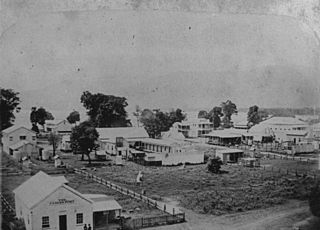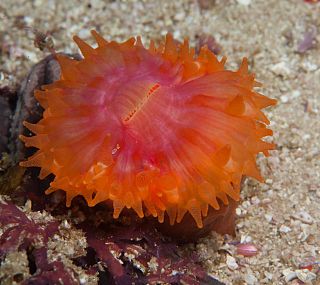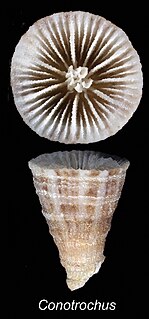
A cairn is a man-made pile of stones. The word cairn comes from the Scottish Gaelic: càrn[ˈkʰaːrˠn̪ˠ].

Cairns Airport is an international airport in Cairns, Queensland, Australia. Formerly operated by the Cairns Port Authority, the airport was sold by the Queensland Government in December 2008 to a private consortium. It is the seventh busiest airport in Australia. The airport is located 2.3 nautical miles north northwest of Cairns or 7 kilometres (4.3 mi) north of the Cairns central business district, in the suburb of Aeroglen. The airport lies between Mount Whitfield to the west and Trinity Bay to the east.

Cairns is a city in Queensland, Australia, on the east coast of Far North Queensland.

Christopher Lance Cairns is a former New Zealand cricketer and former ODI captain, who played for the New Zealand cricket team as an all-rounder. Cairns finished his Test career with a batting average of 33.53 and a bowling average of 29.40. In 2000, he was named as one of five Wisden Cricketers of the Year. He has appeared in ICC Cricket World Cup tournaments on 4 occasions in 1992, 1996, 1999 and 2003. He is regarded as one of the greatest allrounders of the game.

The Cairns Post is a major News Corporation newspaper in Far North Queensland, Australia, that exclusively serves the Cairns area. It has daily coverage on local, state, national and world news, plus a wide range of sections and liftouts covering health, beauty, cars and lifestyle. The Cairns Post is published every weekday and a weekend edition which is called The Weekend Post which is published on Saturdays.

Favia is a genus of reef-building stony corals in the family Mussidae. Members of the genus are massive or thickly encrusting colonial corals, either dome-shaped or flat, and a few are foliaceous. There is a great diversity of form even among individuals of the same species. The corallites project slightly above the surface of the coral and each has its own wall. In most species, the corallites are plocoid and in some, monocentric. The septa and costae linked to the corallite wall are well developed and covered by fine teeth. The polyps only extend and feed during the night. Each one has a small number of tapering tentacles which often have a darker coloured tip; these are called stinger tentacles, or sweeper tentacles. They use these to sweep the water to see if any other coral is in its area; if so, then they begin to sting the other coral. This is commonly known as coral war. Each coral is trying to make sure it has enough room around it so it can continue to grow and have more surface area for its offspring. The columella is parietal and spongy, and there are vesicles on both the endotheca and exotheca. Members of this genus are widespread in both the Atlantic Ocean and the Indo-Pacific.

Dendrophylliidae is a family of stony corals. Most members are azooxanthellate and thus have to capture food with their tentacles instead of relying on photosynthesis to produce their food. The World Register of Marine Species includes these genera in the family:

Balanophyllia is a genus of solitary corals in the order of stony corals.

Caryophyllia is a genus of solitary corals in the family Caryophylliidae. Members of this genus are azooxanthellate and are found in the North Atlantic Ocean and the Mediterranean Sea at depths down to 2,670 metres (8,760 ft).

Cladocora is a genus of corals in the order of stony corals.

Meandrina is a genus of colonial stony coral in the family Meandrinidae. Corals in this genus form massive hemispherical heads or have large flat plates and can grow to a metre (yard) across. Sometimes it is referred to as.

Dendrophyllia is a genus of stony cup corals in the family Dendrophylliidae. Members of this genus are found at depths down to about 900 metres (3,000 ft). They are azooxanthellate corals, meaning that they do not contain symbiotic photosynthetic dinoflagellates as do many species of coral.

Conotrochus is a genus of small corals in the family Caryophylliidae. It holds four species.

Dasmosmilia is a genus of small corals in the family Caryophylliidae.

Flabellum is a genus of marine corals belonging to the family Flabellidae. These are a diverse group of azooxanthellate corals with about 190 species, 47 of which are extant. They are exclusively solitary corals and many are deep water species.

Manicina is a genus of reef-building stony corals in the family Mussidae.
Janaria is a genus of commensal athecate hydroids in the family Hydractiniidae. It is a monotypic genus and the only species is Janaria mirabilis, commonly known as staghorn hydrocoral. It is a colonial species and lives on a shell occupied by a hermit crab. It is native to the tropical and semitropical eastern Pacific Ocean.

Heterocyathus is a genus of coral of the family Caryophylliidae.

Coenocyathus is a genus of cnidarians belonging to the family Caryophylliidae.
Eguchipsammia cornucopia is a species of coral, described by Louis François de Pourtalès in 1871


















